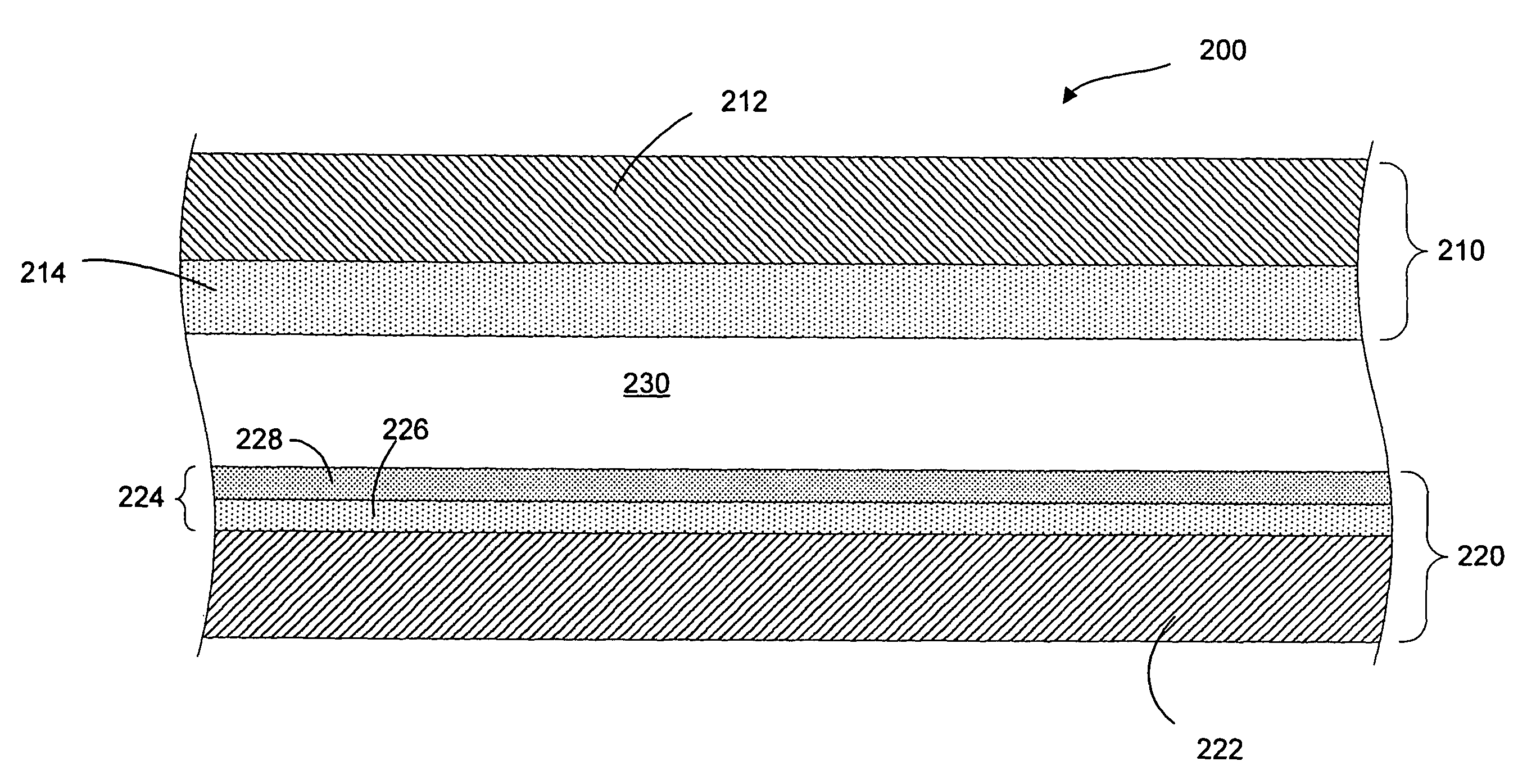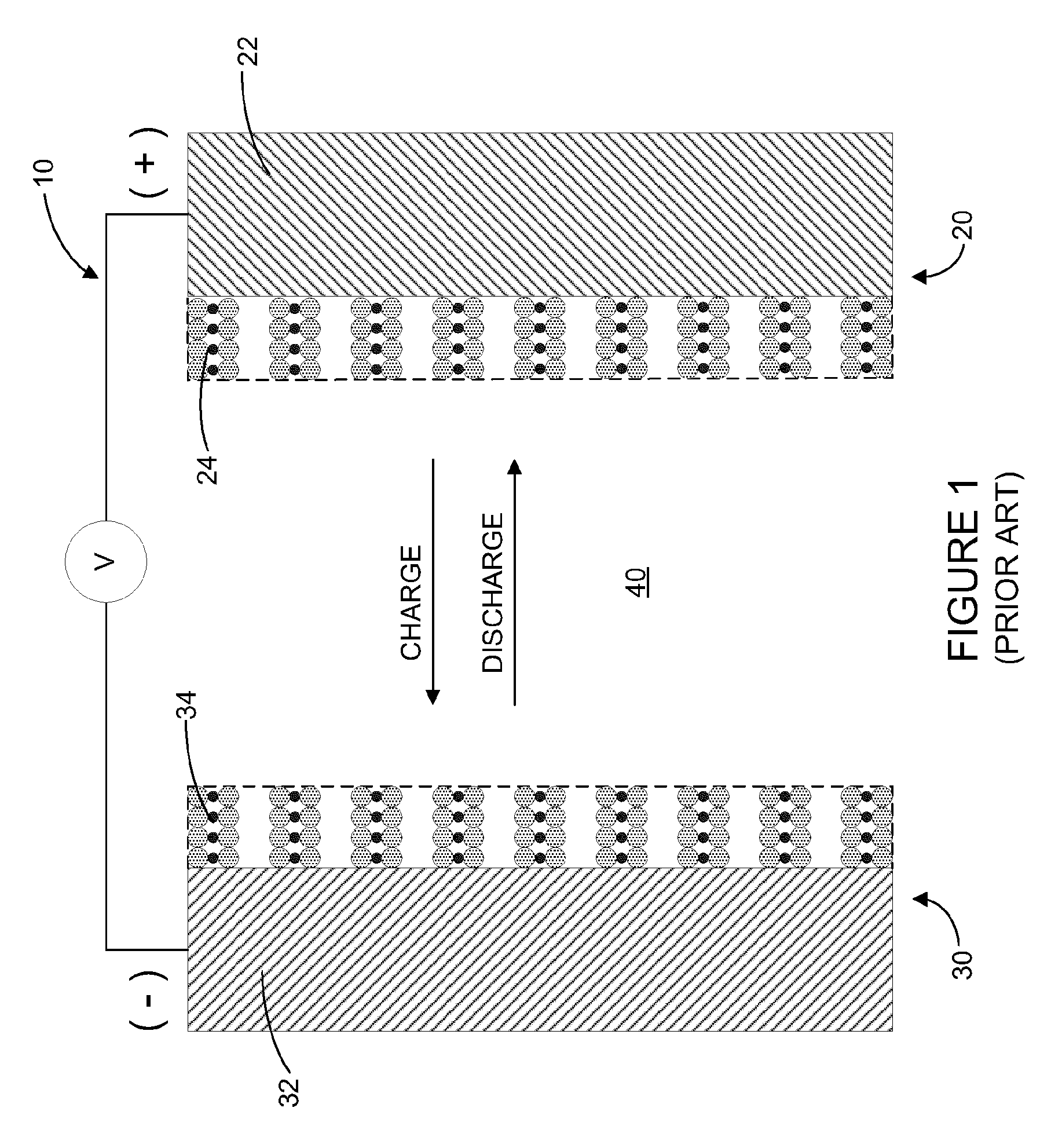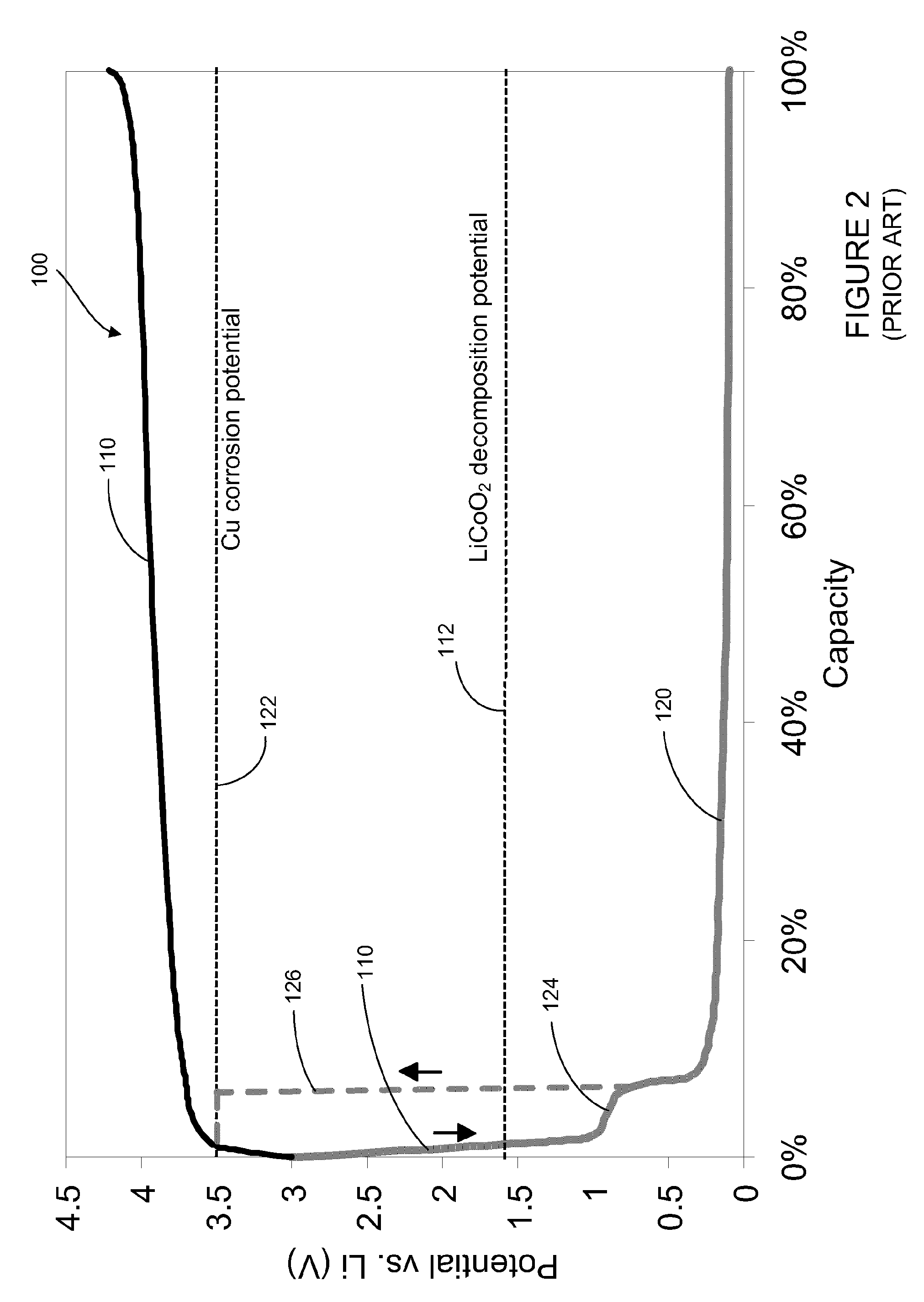Medical device having lithium-ion battery
a lithium-ion battery and medical device technology, applied in the field of lithium-ion batteries, can solve the problems of battery that exhibits a dramatic loss of deliverable capacity, and reduces the protection against future over-discharge conditions
- Summary
- Abstract
- Description
- Claims
- Application Information
AI Technical Summary
Benefits of technology
Problems solved by technology
Method used
Image
Examples
Embodiment Construction
4 is a schematic cross-sectional view of a portion of a lithium-ion battery according to another exemplary embodiment.
[0022]FIG. 5 is a graph illustrating the theoretical charging and discharging behavior for a lithium-ion battery such as that shown in FIG. 3.
[0023]FIG. 6 is a schematic view of a system in the form of an implantable medical device implanted within a body or torso of a patient.
[0024]FIG. 7 is schematic view of another system in the form of an implantable medical device.
DETAILED DESCRIPTION OF THE EXEMPLARY EMBODIMENTS
[0025]With reference to FIG. 3, a schematic cross-sectional view of a portion of a lithium-ion battery 200 is shown according to an exemplary embodiment. According to an exemplary embodiment, the battery 200 has a rating of between approximately 10 and 1000 milliampere hours (mAh). According to another exemplary embodiment, the battery has a rating of between approximately 100 and 400 mAh. According to another exemplary embodiment, the battery is an appr...
PUM
| Property | Measurement | Unit |
|---|---|---|
| corrosion potential | aaaaa | aaaaa |
| corrosion potential | aaaaa | aaaaa |
| thickness | aaaaa | aaaaa |
Abstract
Description
Claims
Application Information
 Login to View More
Login to View More - R&D
- Intellectual Property
- Life Sciences
- Materials
- Tech Scout
- Unparalleled Data Quality
- Higher Quality Content
- 60% Fewer Hallucinations
Browse by: Latest US Patents, China's latest patents, Technical Efficacy Thesaurus, Application Domain, Technology Topic, Popular Technical Reports.
© 2025 PatSnap. All rights reserved.Legal|Privacy policy|Modern Slavery Act Transparency Statement|Sitemap|About US| Contact US: help@patsnap.com



